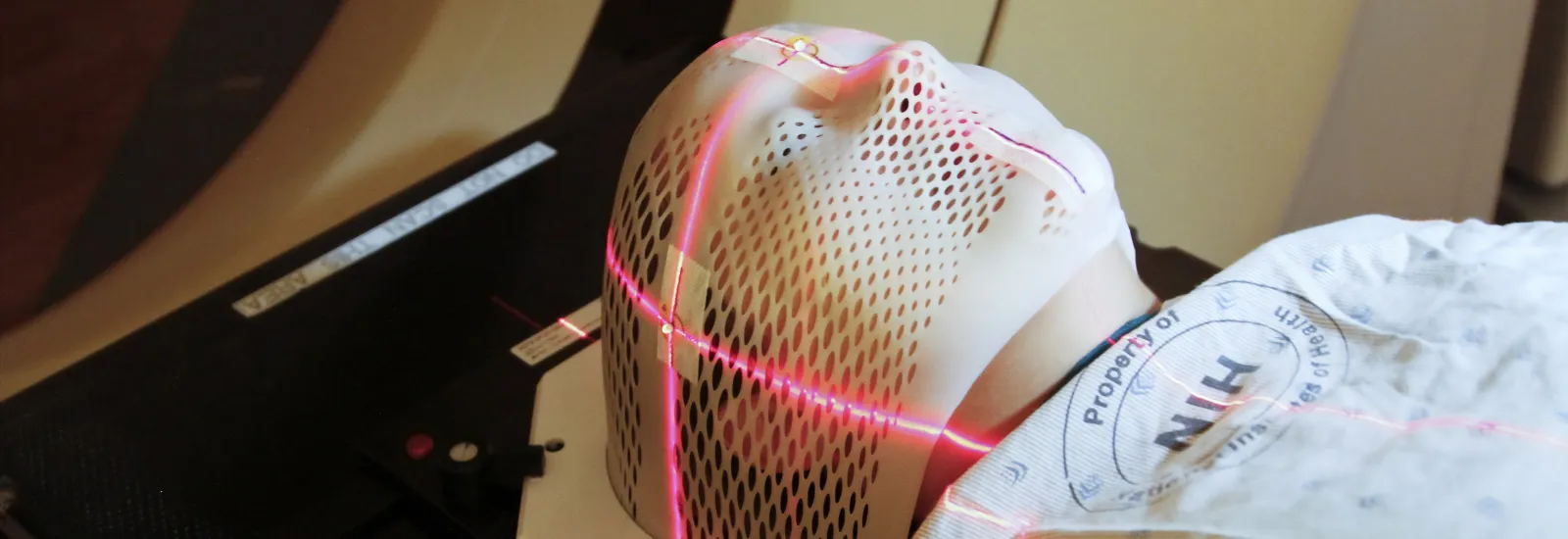
Radiation vs. chemo: Understanding different cancer treatment options
5-minute read
Immediately after your cancer diagnosis, your cancer
care team starts creating a treatment plan. They compare the pros and cons
of radiation, chemo, and other available treatments to decide which one would
work best for you. The goal is to choose personalized cancer treatments suited
to your needs.
The type of cancer you have, the area of the body where it started,
whether it has spread, and many other factors play into which treatment you
receive.
Chemotherapy
Cancerous cells grow and spread by rapidly dividing in two. Chemotherapy
drugs travel throughout the body, looking for and destroying those rapidly
dividing cells. This can help slow the growth of cancer, shrink tumors, stop
the spread of cancer, and provide relief from symptoms.
Currently, there are more than 100 types of chemotherapy,
according to the National
Library of Medicine. The medication you receive depends on the type of
cancer you have, its stage, and other factors.
Cancers commonly treated with chemotherapy might include:
- Brain cancer
- Breast cancer
- Hodgkin lymphoma
- Gastrointestinal cancers (stomach, intestinal, colorectal, anal, pancreatic, etc.)
- Leukemia
- Lung cancer
- Lymphoma
- Myeloma
- Ovarian cancer
- Sarcoma
Chemotherapy targets all rapidly dividing cells in the body—cancer
cells as well as other healthy cells in the hair follicles, bone marrow,
digestive tract, mouth, and reproductive system. Because chemotherapy can't
differentiate between cancer cells and fast-growing healthy cells, it kills both.
As a result, someone undergoing chemotherapy might lose their hair, develop
mouth sores, lose weight, and experience fatigue, along with many other side
effects that develop when healthy cells die.
Chemotherapy comes in different forms. The most common form is
delivered through an injection or IV. In certain cases, you can take chemotherapy
pills or use a topical chemotherapy cream.
Some patients receive chemotherapy as a standalone treatment,
but in most cases, patients receive two or more treatments for their cancer.
Radiation therapy
Radiation therapy
uses high-energy radiation to kill cancer cells and shrink tumors. It can be
delivered in one of two ways:
External
beam radiation therapy.
Useful for treating a variety of cancers, external radiation relies on a
machine to focus a beam of radiation on the cancerous area, destroying any
cells it contacts.
Internal
radiation therapy. Prostate,
neck, and cervical cancers might respond to a type of internal radiation known
as brachytherapy. With brachytherapy, a radioactive seed, capsule, or ribbon is
injected near or in the tumor. Over time, the radioactive material releases
radiation and destroys cancerous cells.
Although
radiation therapy is more precise than chemotherapy, it can also damage healthy
cells. Side effects of radiation therapy include:
- Fatigue
- Hair
loss
- Headaches
- Hearing loss
- Irritated, blistered, or swollen skin
- Nausea and vomiting
Surgery: Complementing chemotherapy and radiation therapy
Surgery can
be the first, last, or only treatment needed. With skin
cancer, for example, surgery can remove a lesion or cancerous area before the
cancer spreads to other areas of your body.
In many
cases, however, surgery is used in addition to chemo and radiation. Choosing
when to turn to surgery depends on your needs. Cancer surgery can help in the
following situations:
- You have a large tumor. Before undergoing
radiation therapy or
chemotherapy, a surgeon might remove part of your cancer. This is common when
removing a tumor would injure nearby healthy tissues or organs. After surgery,
chemotherapy or radiation can help kill the remaining cancer cells.
- Other treatments shrink your tumor. Clinicians can use surgery after
treating cancer with radiation or chemo to shrink a tumor and make it easier to
remove.
- Your cancer causes pain or other
symptoms. Very large
tumors can press against organs and cause pain and other symptoms. Surgery to
remove part of the tumor might provide relief and improve quality of life.
- Cancer
surgery results in physical changes. Reconstructive surgery restores the body's natural shape
after surgery or other treatment. Performed by a plastic surgeon, breast
reconstruction is one of the
most common reconstructive surgeries in cancer care. It takes place after the partial
or total removal of one or both breasts.
- You want to prevent cancer. Some people at high risk of cancer undergo preventive surgery before cancer is diagnosed. If genetic testing shows a high risk of breast and ovarian cancers, mastectomy or ovary removal can reduce the risk.
A new option for treating cancer
New therapies
are improving cancer care. Immunotherapy works by helping your body fight
cancer on its own.
A healthy
immune system is always on guard, protecting you from sickness. When germs,
viruses, and other foreign substances enter your body, your immune system identifies
the threat and works to eliminate it.
Cancer cells
sneak by your immune system because they aren't foreign invaders. They're made
by your body. As a result, your immune system doesn't always recognize cancer
cells as a threat. This allows cancer cells to multiply and spread without your
immune system noticing. Immunotherapy trains your immune system to identify and
attack cancer cells.
Immunotherapies
can be used to treat the
following cancers:
- Bladder cancer
- Brain cancer
- Breast cancer
- Cervical cancer
- Colorectal cancer
- Esophageal cancer
- Kidney cancer
- Leukemia
- Liver cancer
- Lung cancer
- Pancreatic cancer
- Prostate cancer
- Stomach cancer
Regardless of the type of cancer you have, you can be confident your Reid Cancer Center team will personalize a treatment program that will work best for you.
Looking for help navigating the road
to radiation, chemotherapy, and beyond? Request an appointment at Reid Cancer Center to learn how we can help you.

